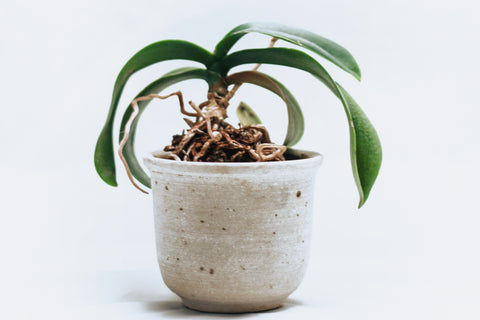Phalaenopsis Orchids, some of the most elegant florals with one of the most complicated names, are actually easy to look after. This guide will take you through some steps to make your orchid flowers bloom for up to half a year.
Phalaenopsis orchids are a treat to look at or to give someone special. They are known for their wing-like white flowers, extended stems, and deep green foliage. They are very common and popularly grown since they are easy to take care of and since they last long.
If you are planning to have a few orchids growing, you could either get them to grow from scratch or consider getting a few healthy pre-potted White Phalaenopsis Orchid plants from us. Once you have a healthy plant growing, it's all about maintaining it well. To make sure that you are providing the ideal conditions for your orchid plants to thrive in, read through our comprehensive guide of Phalaenopsis Orchid care tips.
1. Watering sufficiently, but not excessively
Your orchids need watering regularly, but don't overdo it. These plants like to dry out between waterings, so let the potting mix dry out before watering again. Be especially careful not to overwater during the winter months.
The orchid roots are prone to rot in excessive moisture. Therefore, it’s important that you figure out the perfect time to water them. A good way to tell is to stick your finger and feel the moisture or feel the weight of the pot to decide whether it’s the best time to water.
Usually, orchid plants need watering only around once a week. They would require a drink a little more often in the hot summer.
2. Fertilising the plant
To make your happy orchid plant produce the best flowers, and to ensure it is strong and healthy, give it the best food! Fertilise your orchid weekly with a balanced fertiliser such as 20-20-20. It is also recommended to use a fertiliser with a high potassium content.
Phalaenopsis orchids are heavy feeders, so don't skimp on the fertilizer. The frequency of your fertilising sessions should be about a week apart or depending on your recommendations on the packaging. However, your orchid plants won’t require food that often during the winter months.
3. Keep them warm but in indirect sunlight
To be the best orchid owner out there, you need to get used to warmer temperatures. These indoor plants love temperatures between 24°C and 29°C, but they despise direct and scorching sunlight.
Place your orchid in an area that receives indirect sunlight. An east or west-facing window is ideal.
4. Air circulation and humidity
Make sure you provide good air circulation around your orchid. Phalaenopsis orchids like it breezy, so a fan blowing at low speeds near the plant is ideal. Don’t misunderstand these beauties as too fussy, but they love a humid atmosphere even though they do not like to be watered excessively.
One good trick to ensure they have the humidity they need is to stand the pot in a tray filled with pebbles and a little water. This ensures that the roots are out of the water surface, but the surrounding is wet and humid enough for the plant to thrive in.

5. Trim the roots carefully
Orchids need their roots trimmed every few months to keep them from becoming too pot-bound. However, trimming roots is a task that you need to undertake with a lot of care.
Phalaenopsis orchids can be trimmed using a sharp, sterile knife or scissors. Cut away only the roots that you are sure are dead or damaged. You can then replant the orchid in a new pot using a fresh potting mix. Avoid cuttings that are too deep.
6. Repotting your Orchids at the right time
The best time to repot your orchid is during the spring or summer months when the plant is in active growth. Be sure to use a pot that is only slightly larger than the current pot, and make sure to use a fresh potting mix.
Gently remove the orchid from its current pot and replant it in the new pot using a fresh potting mix. Water well after repotting.
7. Trimming the stems
After your orchid has bloomed, you can cut the stem to get flowers again. Cut the stem below the first node (the point where a leaf attaches to the stem). New flowers will form at the nodes, and you can then repeat the process of watering, fertilizing, and providing good air circulation.
This is the only time your plant would appreciate a bit of a cooler temperature. Phalaenopsis orchids, while flowering, need to be kept in cooler conditions to encourage flowering.
Orchid plants are common indoor plants. Getting them to flower consistently is not an easy task. To get the orchid flowers you like accompanied by vases and bouquets of all sorts, head over to our products page.


